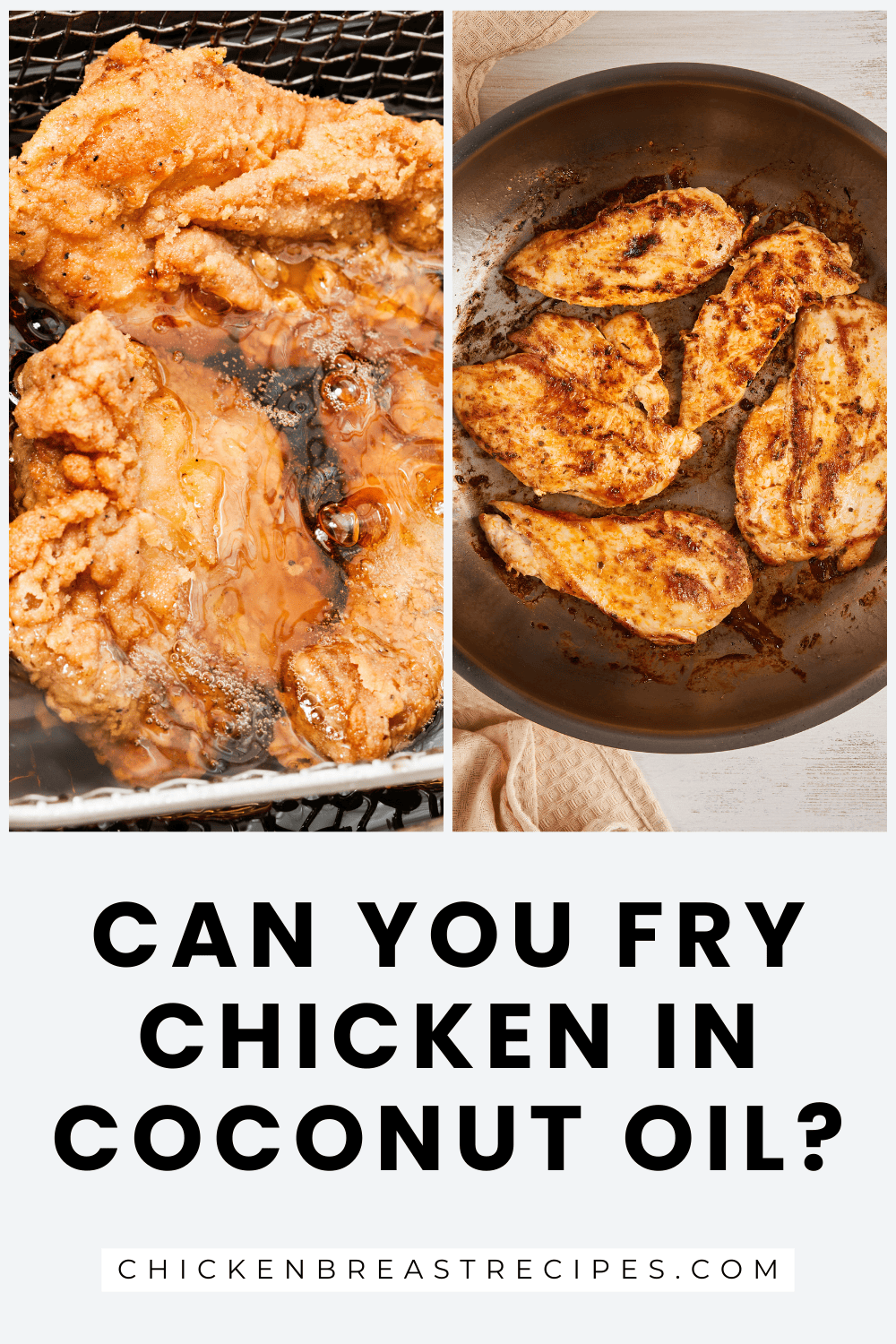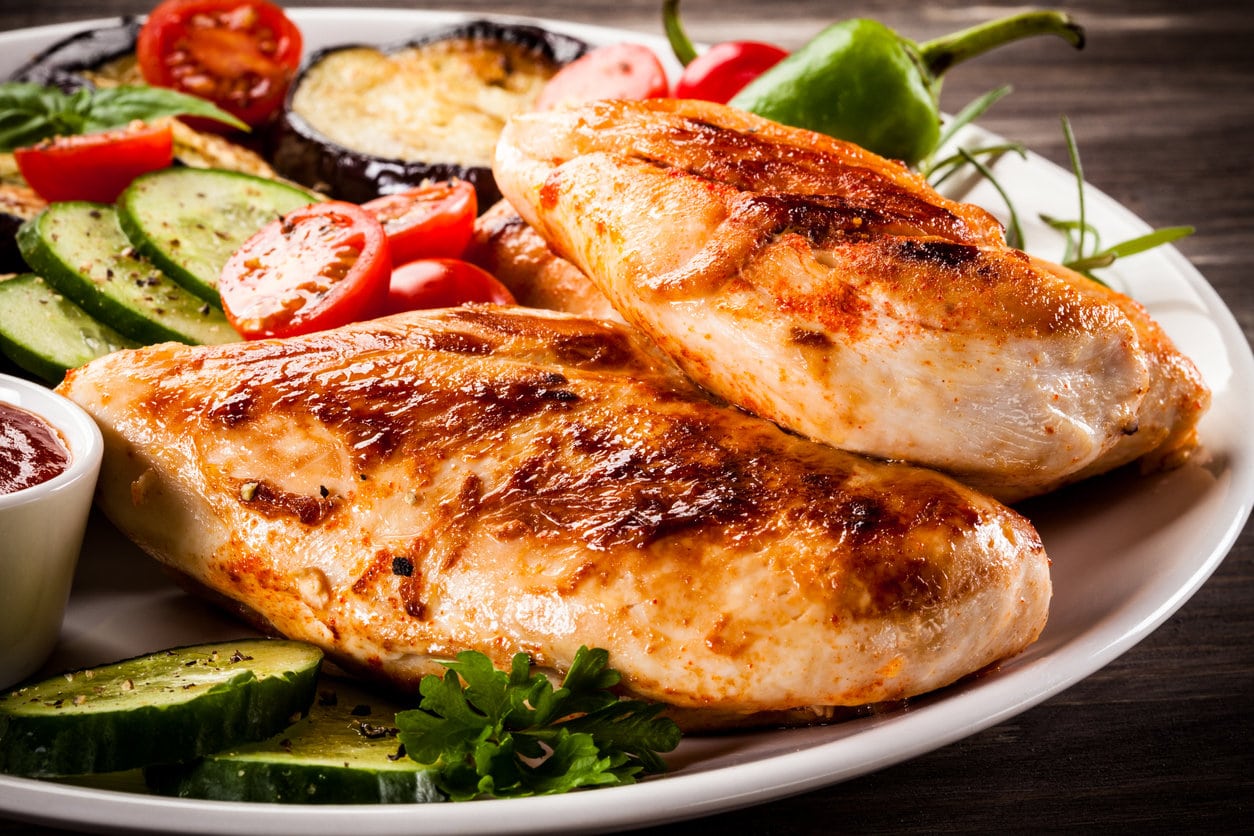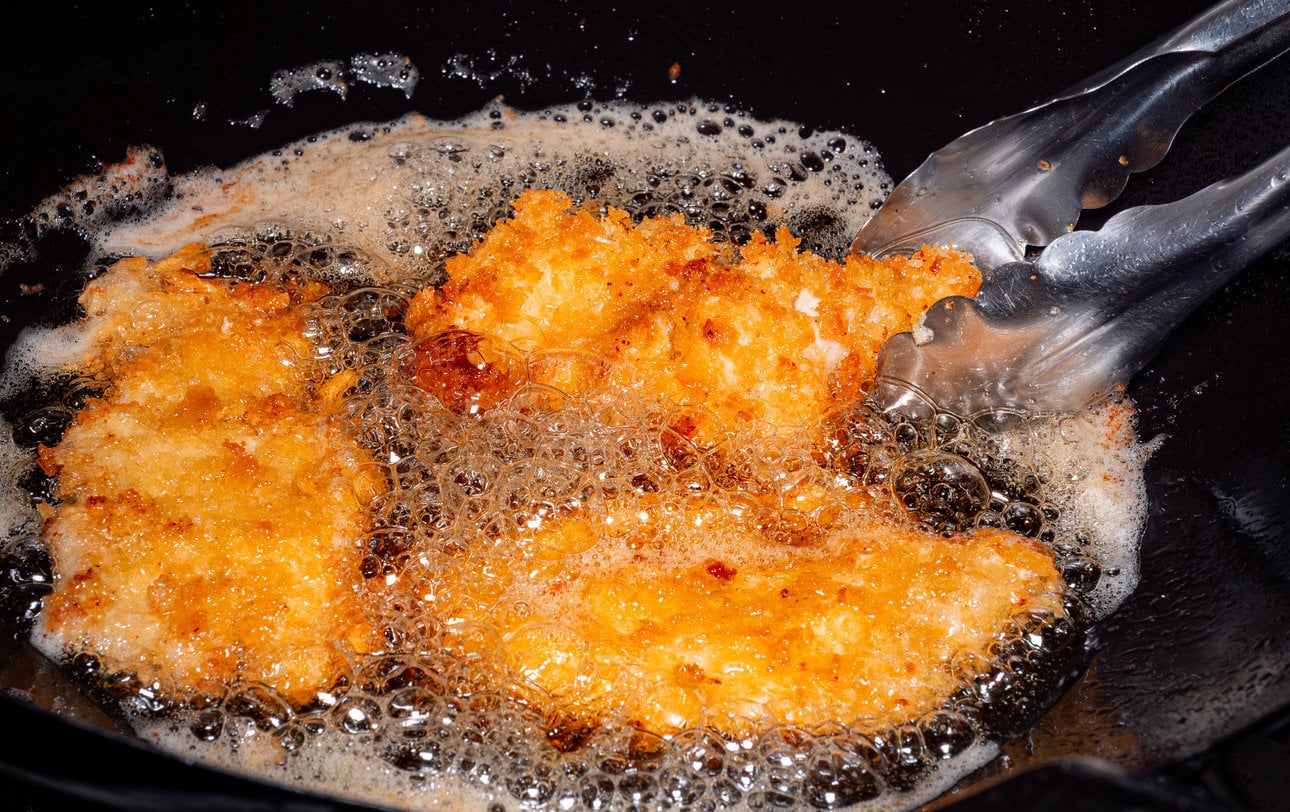Can You Fry Chicken in Coconut Oil? How-to & Tips!
Yes, you can fry chicken with coconut oil! Yes, frying chicken in coconut oil is a great choice for those looking for a healthier alternative to traditional cooking oils. Coconut oil’s high smoke point makes it suitable for high-temperature cooking, such as deep frying, ensuring your chicken comes out crispy and delicious. Let’s jump into more detailed tips and techniques for frying your favorite chicken recipe using coconut oil.

Benefits of Frying Chicken in Coconut Oil
Coconut oil, with its high smoke point and rich composition of fatty acids, stands out as an excellent choice for frying. Unlike oils with lower smoke points, like extra virgin olive oil, coconut oil can withstand high temperatures without burning.
This not only prevents the formation of harmful compounds but also ensures your fried chicken has a deep golden brown appearance and a crispy texture. For a neutral flavor, refined coconut oil is a good option, as it has a higher smoke point and a more subtle taste compared to unrefined coconut oil.
Deep Frying Chicken in Coconut Oil
When deep frying, the type of oil you use is crucial. Coconut oil, alongside other high smoke point oils like canola oil, peanut oil, and avocado oil, are excellent choices. Here are some steps and tips for deep frying chicken in coconut oil:
- Choosing the Right Oil: For deep frying, opt for refined coconut oil due to its higher smoke point. This ensures that your oil won’t burn at the high temperatures needed for deep frying.
- Preparing the Chicken: Coat your chicken pieces in a flour mixture that can include coconut flour, rice flour, or even panko breadcrumbs for added texture. For a spicy kick, add seasonings like garlic powder, onion powder, and red pepper flakes to the flour mixture.
- Frying the Chicken: Heat the coconut oil in a deep fryer or a large skillet to around 350°F. Carefully place the chicken in the hot oil and fry until it reaches a deep golden brown color. Use a meat thermometer to check the internal temperature of the chicken.
- Draining the Chicken: Once fried, remove the chicken and let it drain on a wire rack over a baking sheet or paper towels. This helps to maintain the crispiness of the chicken.
Safety Considerations When Deep Frying
Deep frying at higher temperatures requires careful attention to safety:
- Monitor the oil temperature to prevent overheating. Burnt oil not only imparts a bad taste but can also be hazardous.
- Keep a lid nearby to quickly cover the frying pan in case of oil splatters.
- Never leave hot oil unattended on the stove top.

Light Pan-Frying with Coconut Oil
For a lighter version, pan frying is an excellent method. This is the way I typically cook chicken tenderloins for my family.
- Preparing the Chicken: Pound chicken breasts, tenderloins, or thighs to an even thickness. This ensures even cooking and a juicy interior.
- Cooking the Chicken: Heat a tablespoon of oil on medium-high heat in a large skillet. Place the chicken in the pan and cook until golden brown on each side. Check the internal temperature with a meat thermometer. The internal temperature of chicken should be 165 degrees F.
- Serving: Serve the crispy chicken with sides of your choice. This pairs well with a variety of dishes, offering a delicious meal.
Common Questions and Additional Tips
- What about other oils? While coconut oil is a great way to fry chicken, other high smoke point oils like sunflower oil, avocado oil, and vegetable oil are also good choices. Peanut oil and canola oil are also excellent options for frying due to their neutral flavors and high smoke points.
- Can I use coconut oil in an air fryer? Yes, you can use coconut oil in an air fryer. It’s a healthier option compared to traditional frying methods. Just brush a thin layer of oil on the chicken pieces for a crispy exterior.
- How do I store coconut oil? Keep your coconut oil in a dark place at room temperature. This preserves its quality and prevents it from going rancid.
- Flavor Transfer: Be mindful that coconut oil can impart a slight coconut flavor to your fried chicken. If you prefer a more neutral taste, consider using refined coconut oil or a different oil like canola oil or other neutral oils. Personally, I love the subtle sweet flavor of coconut oil, especially when frying chicken.
- Oil Temperature: Keeping a consistent oil temperature is key to perfect frying. Use a thermometer to maintain the right temperature and prevent the oil from reaching a point where it smokes.
- Cooking Dark Meat vs. White Meat: Remember that dark meat (like chicken thighs and legs) takes longer to cook than white meat (like chicken breasts). Adjust your cooking times accordingly for the best results.
- Healthy Frying Tips: To make your fried chicken a healthier option, consider using coconut flour or almond flour for coating. These flours are lower in carbs and offer a unique flavor profile.
- Alternative Cooking Methods: If you’re looking for a different way to cook chicken with coconut oil, consider using a shallow dish on medium heat for a quick and easy recipe. This method is great for making coconut chicken fingers or chicken thighs.

Remember, choosing the right cooking oil for frying is not just about the smoke point but also about the flavor and health benefits it can bring to your dish. Coconut oil, with its unique properties, offers a delicious and healthier alternative to traditional frying oils. So, the next time you’re planning to fry chicken, give coconut oil a try and enjoy a crispy, flavorful, and healthier meal.